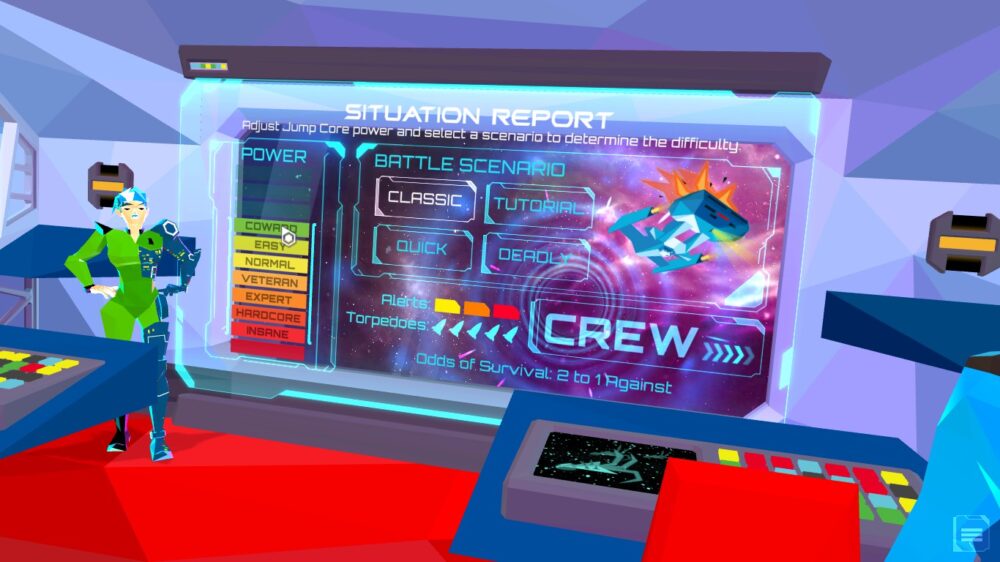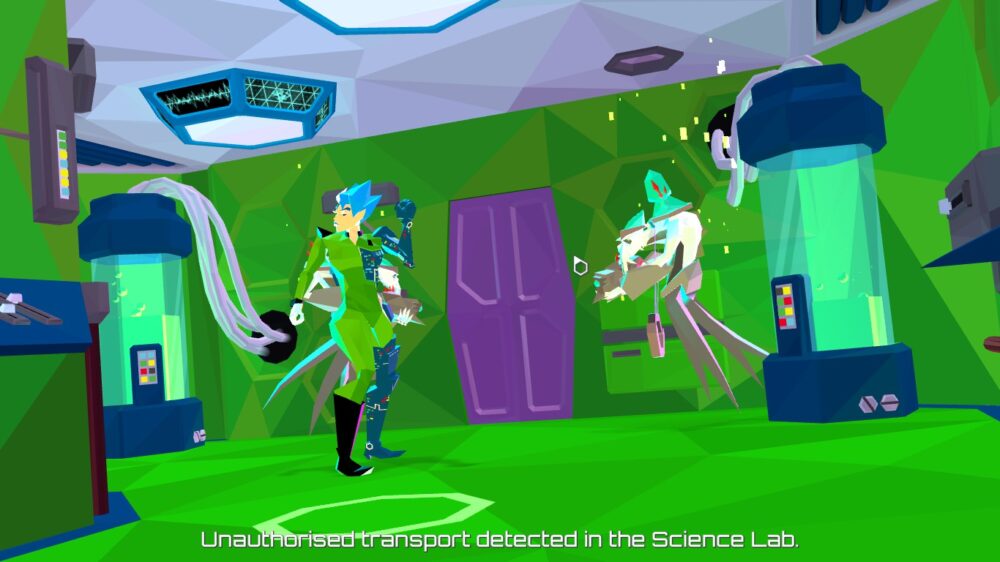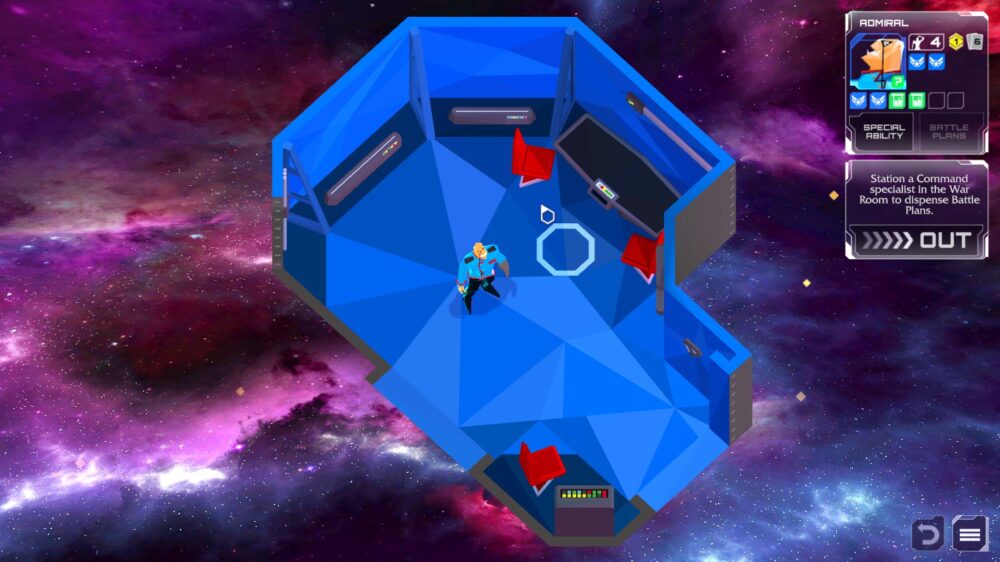Space. The deadly frontier. These are the voyages of a select crew who probably wish they’d signed up on another ship or chose a different career path all together because the Captain really is dead, and soon you will be too. Been a lion tamer doesn’t seem so bad now at all, does it?
Based on a board game of the same name, The Captain is Dead hews closely to its board game roots with its rules and gameplay making it, essentially, the digital version of the board game with animation and a pretty good soundtrack to boot.
Heavily inspired by 1960’s Star Trek and other SF and movie shows, The Captain is Dead throws a light veneer of humour over what is a rather dastardly and extremely, extremely hard disaster management sim. Don’t let its visuals or snarky attempt at humour fool you. This game will repeatedly kick you in the teeth with a smile and not let up under any circumstances and that’s just on the easiest setting. That the game’s tutorial takes you through the steps you need to know and then kills you before resetting the games “timeline”, should tell you what to expect.

You’re onboard a crippled ship in hostile space. To survive you have to repair the ships Jump Core to warp out of danger. Aliens are attacking en masse with fighters, mother ships and boarding parties. Your ships equipment and defensive capabilities are damaged or going to be. That’s the scenario. Pretty straight forward in theory, but nightmarish in practice.
Repairing the broken components of your ship and taking down aliens requires action points, engineering skills, science skills, etc. All of which is the digital version of the physical games skill cards. There are seven crew members with their own set of starting skills, action points and special abilities. The android isn’t affected by anomalies, for instance, the admiral can call up battle plans from anywhere on the ship and the red shirt dies in place of another crew member. Each component requires a set number of skills and action points to repair, so choosing which four of the crew to take with you into battle becomes paramount.

Starting a game, after choosing a difficulty setting that shows your odds of winning and from different game types such as classic and quick, randomises the problems, known as alerts, that you begin with. They can be anything from a heavily damaged Jump Core to increased gravity but there’s a number of them which already places you at a disadvantage. At the end of each character turn, two new alerts are introduced with a full rotation setting you up with eight new problems per crew rotation.
The problem really begins with the extreme difficulty of the situation. Effectively managing one problem can take one full rotation, especially if you plan poorly or are crippled by the bad randomisation, leaving you with four more problems to add to your list. Equipment that you’ve just fixed will usually end up been damaged again in one or two-character turns setting you right back to where you began. Trying to repair your shields once shouldn’t take more than one rotation, but sometimes it can take two or even three depending on what is currently breaking or which anomaly is making your life even more difficult. Then add on those other pesky new alerts.

A lot of the game seems to be based on luck, luck that you will get good randomisation of events at the beginning, or that the ship’s computer will randomly generate the skills you need as you go along. Spoiler, that rarely happens. What usually does happen is that you find yourself running out of skills because you’ve used up your starting ones, transferred existing crew skills between crew members who needed them and are then sitting around without the skills you need to attempt to win. Add on to that the continuing escalation in problems one after the other, like a bad SF movie that doesn’t know when to stop throwing the kitchen sink at you, and you’re left with one increasingly arduous situation that you have no hope of winning. And that’s when the game doesn’t mess you over with a bad random set up right from the get-go.

If the idea behind the game was to dictate the hopelessness of trying to rescue an ailing space ship, they’ve more than succeeded. The number of things going wrong at each and every turn is, quite frankly, ludicrous. Instead of developing the skills to balance what’s happening, you’re smashed in the face with roadblock after roadblock that leaves you trying to play an ineffectual game of catch-up in which you’re already lagging behind and the gap just gets larger and larger with each step. Making a game hard is one thing, making it impossible to win is something else entirely. Each play session has left me feeling angry, frustrated and ultimately dejected.
Visually the game’s graphics are reminiscent of the early days of 3D with serious low poly visuals meaning you can run it on even on a potato PC. The visuals aren’t ugly but they’re not attractive either. Most of the ships holographic overlays though for the various components are a bit of an eyesore. Voice acting is pretty decent but after a while grates as you’re forced to listen to the same lines over and over. The game’s soundtrack, however, is pretty good.

It’s entirely possible that the more you play, the better you’ll get at it but between the constant, cartoonish level of threat escalation, the compounding amount of alerts and some truly godawful randomisation that made me feel like I was at the mercy of a sadistic, vindictive, tone-deaf Dungeon Master, I can’t imagine why you’d want to. There’s a decent enough idea here but right now, without some much-needed rebalancing, The Captain is Dead tells me that he’s the lucky one because this game just isn’t any fun at all.
The Captain is Dead is out now on Steam, iOS and Android!
Enjoy the review? want to read more of our reviews? then click right here to be whisked away to the realm of our opinions.








You must be logged in to post a comment.